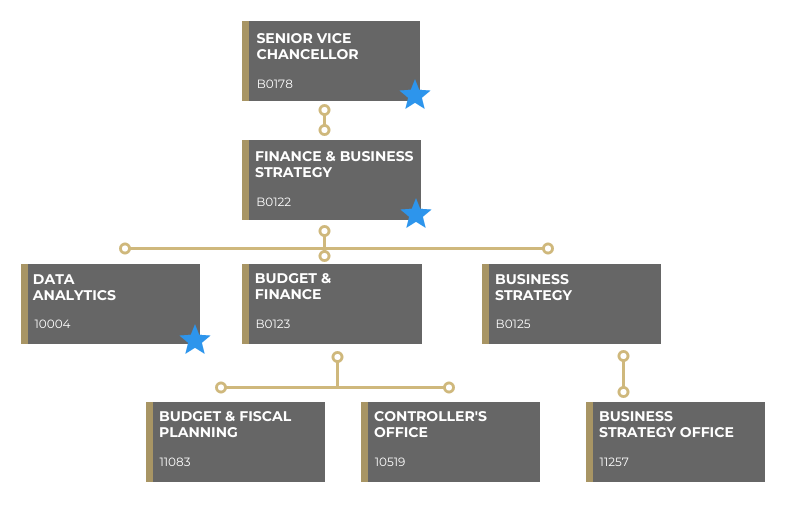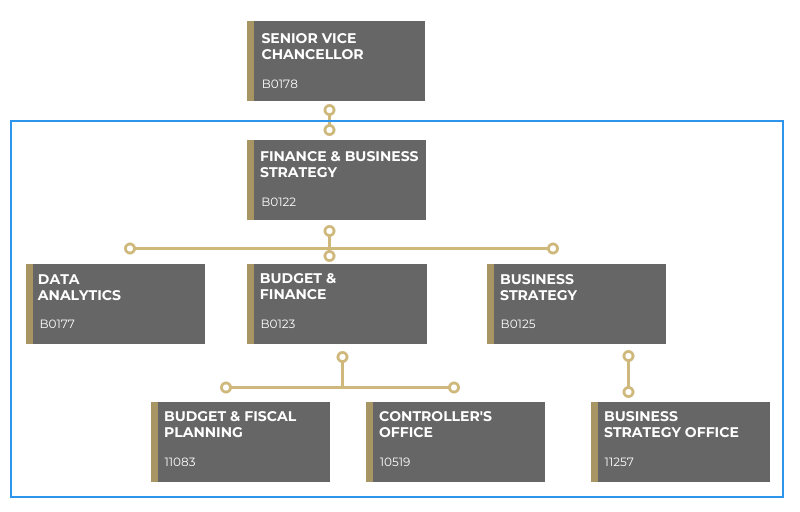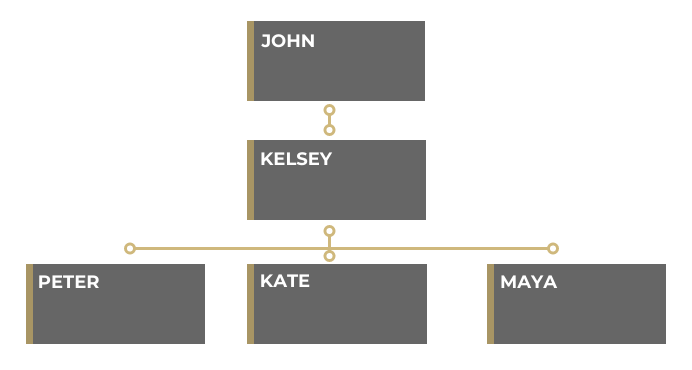Salesforce | Employment: Org Tree
The Org Tree field is newly available on the Employment object in Salesforce. The field is populated with concatenated, five digit codes that each represent departments across CU and must be translated. The values indicate the organizational hierarchy, based on the department the employee works in.
For example, an employee who works in the Data Analytics department (image below) will have an Org Tree indicating Senior Vice Chancellor >> Finance & Business Strategy >> Data Analytics (written as code: B0178;B0122;10004). It starts with the highest department (Senior Vice Chancellor) and continues until arriving at the department they work in (Data Analytics).

What can you achieve?
Oftentimes, messages for employees might be relevant based on the department they work in or the department 'above' theirs. The Org Tree makes it easy to capture numerous departments that are related (according to the organizational hierarchy).
For example, using Org Tree CONTAINS Finance & Business Strategy (written as code: B0122) will capture those employed in that department as well as any employees in the six departments below it (outlined in a blue box).

Org Tree & Job Dept. ID
There is slight overlap in data present in the Org Tree and Job Dept. ID fields, both found on the Employment object. The last value in the Org Tree field will always reflect the same value as the Job Dept. ID. Like the example below, the last code in the Org Tree field (10004) is the same as Job Dept. ID (10004).

What can't you achieve?
The Org Tree field does not represent an organizational chart of individuals or a hierarchy of supervisors.
For example, you can't capture the individuals who ultimately report up to someone (like John). In other words, a report of those who John supervises (Kelsey), plus anyone Kelsey supervises (Peter, Kate & Maya) cannot be achieved with the Org Tree field.






